by Ocean Robbins: If a food or beverage makes your tongue feel like all the moisture has been sucked out of it, it could be because it’s rich in tannins.
We are proud to announce a new partnership with John and Ocean Robbins and the Food Revolution to bring our readers Summits, Seminars and Masterclasses on health, nutrition and Earth-Conscious living.
Sign Up Today For the Food Revolution Summit Docuseries
These compounds, produced by plants to protect themselves, may also protect us from inflammation, microbes, and free radical damage. But some people see tannins as antinutrients, compromising our ability to absorb minerals and protein. So what’s the truth about these common and strong-tasting phytochemicals?
Without it, we wouldn’t have Leonardo da Vinci’s futuristic drawings of hang gliders and helicopters, Pliny the Elder’s theories of metal alloys, or most of the Bibles printed in the last 1,500 years. I’m speaking here of iron gall ink, a dark purple-black or brown-black liquid pigment that was used to create permanent marks on paper, vellum, and canvas.
The ink got its name from the iron sulfate that was mixed with an acid derived from the galls of oak trees. While it would take scientists until the 19th century to identify the compound as a form of tannic acid known as gallotannic acid, humans have known about the many powerful properties of the stuff for millennia.
In addition to creating an ink that wouldn’t fade, tannic acid was also used to turn animal skins into leather (the name of the acid is related to that process, known as tanning). It’s also a popular mordant (a chemical that can fix dyes to natural fibers such as cotton), an adhesive, and a rust preventer.
While tannins have proven really useful in crafts and manufacturing, that’s not the whole story. They also feature in some astringent foods and beverages that create a distinctive sensation in the mouth that makes your tongue kind of feel like it has lost all moisture. In high concentrations, tannins taste bitter — just think of that cup of tea you left the bag in too long.
Wines also get much of their body, structure, and flavor from various types and concentrations of tannins. While I’m no expert, and have never really gotten the hang of wine language (you know, “a light-bodied crisp earthy complexity with notes of rhubarb, Rocky Road, and yellow Crocs”), I do know that tannins are involved in wines that are typically described as “grippy, structured, or aggressive.”
We can disagree about tastes, but opinions also differ on whether tannins are good for us. Some people report sensitivity to tannins in specific foods and beverages, including wine. Some health influencers include tannins in the broad and misunderstood category of compounds called “antinutrients,” and warn us against overconsumption (and in some cases, any consumption at all). Others argue that tannins, like other chemicals in plants that act as natural pesticides to discourage animals from munching on them, provide health benefits, and should be sought out, not feared.
So what’s the truth about tannins? Are they good or bad for you? And where can you find them in food and beverages, in addition to that neglected cup of tea and that grippy glass of wine?
What Are Tannins?
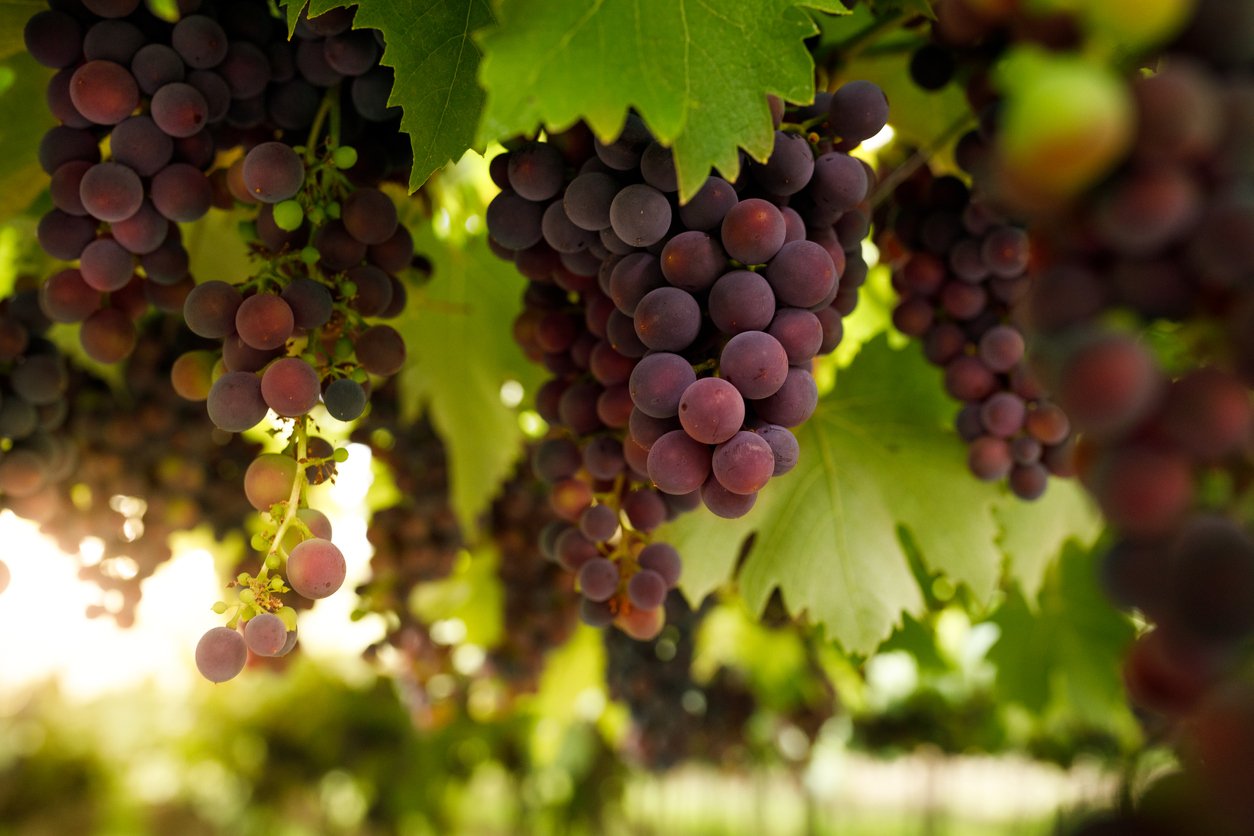
Tannins are a class of chemicals found in plants. Specifically, they’re part of the family of polyphenols, many of which are celebrated for their amazing health benefits. Science has, so far, discovered about 8,000 polyphenols. I’m not going to name them all (as that would make for a very long and very boring article), but some of the most famous polyphenols include resveratrol (from red grapes, red wine, and cocoa), curcumin (in turmeric), and anthocyanins (found in blueberries and other dark berries).
Like many other polyphenols, tannins act as antioxidants, helping to prevent and reverse cellular damage caused when free radicals attack our cells.
Biochemists refer to the tannins in food as forms of tannic acid. There are two main classes of tannins: hydrolyzable tannins and proanthocyanidins. Proanthocyanidins are mostly found in red, blue, or purplefruit and flowers (not a coincidence — they actually give those plants their dark, rich hues). That’s one reason many dietitians encourage their clients to “eat the rainbow”; each color in plants delivers a different set of beneficial compounds to the body.
Like many other phytonutrients, tannins help protect plants from predators and fungi. And they may benefit us via a process known as “hormesis,” in which something harmful in large concentrations is actually beneficial in smaller doses, as it trains our body to handle stressors more effectively.
Are Tannins Good or Bad for You?
Like most complex questions, the answer to this one is “it depends.” In this case, it depends on whether you are a human or a different kind of animal (I’m going to go out on a limb here and assume that you’re human; I humbly beg all literate cats reading over their humans’ shoulders to forgive me), whether you suffer from protein or iron deficiency, and whether you’re consuming purified tannins in large concentrations or just getting some incidental tannins from food.
Tannins’ Antinutrient Effects
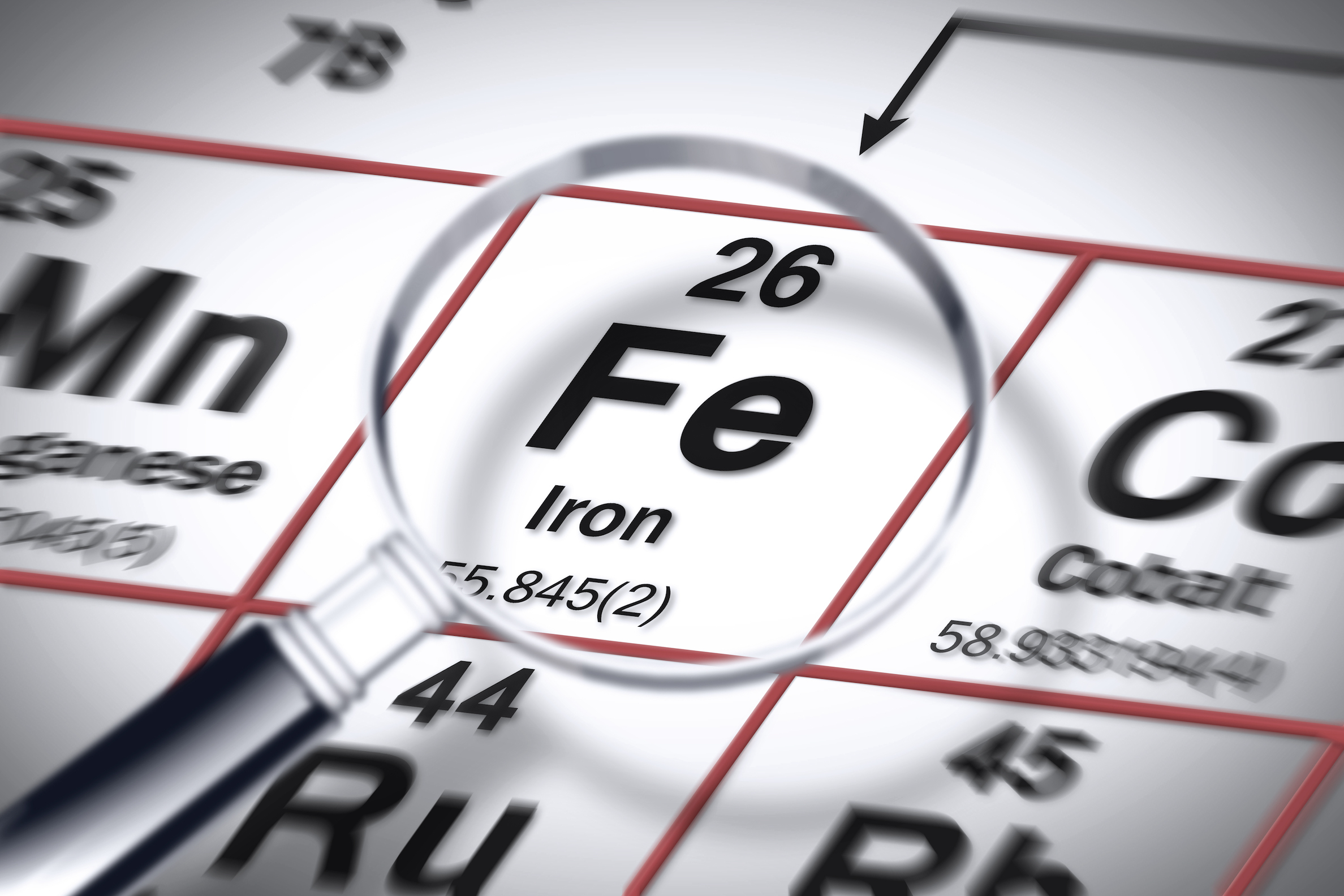
It’s true that tannins can block the absorption of other nutrients, which means they qualify as antinutrients. Like others, tannins act by binding to particular nutrients in food, thus making it harder for our bodies to absorb those nutrients. In the case of tannins, those nutrients include protein and some minerals.
When tannins bind to protein, they reduce its digestibility. Admittedly, this has been studied much more comprehensively in livestock than humans, as the profitability of the meat industry is closely tied to the protein equation.
When it comes to minerals, it appears that tannins can block the absorption of iron, but not other essential trace minerals such as copper, zinc, and manganese.
Tannins, specifically those found in tea, may suppress iron absorption when consumed with a meal rich in nonheme iron. But before you tea lovers start chewing on magnets and cast iron skillets, realize that not everyone needs more iron. In fact, many of us need less. And it’s easy to override the potential inhibitory effects of tannin on iron absorption by consuming just 30 mg of vitamin C (the amount you get from about one-quarter of a pepper or half of an orange) at the same time.
Animals that have been subjected to continuous administration of purified tannins do show damage to liver and kidney tissue. But studies of humans show these results don’t extrapolate; tannins in food have been found to be safe for humans. Whether it’s because we’re different from the animals under study, whether we don’t subject other humans to continuous tannin drips (even the most hard-core tea drinker takes a break now and then), or whether the tannins in whole foods act differently than concentrated tannic acid, it doesn’t appear that tannins pose any health threat to the vast majority of us.
Tannin Sensitivity
As I mentioned, some people report having a sensitivity to tannins, mainly in the context of red wine. They complain of headaches, facial flushing, and digestive problems. However, no one has collected data demonstrating tannin sensitivity, so some researchers posit that wine sensitivity is likely due to other compounds in wine, such as sulfites, salicylates, or histamine, rather than tannins.
That said, if you do worry about tannins in a food or beverage, there are ways to reduce their concentrations. You can steep tea for shorter periods of time or choose low-tannin varieties (like herbal teas). You can tame the tannin in foods by subjecting them to heat — roasting, slow cooking, pressure cooking, and baking are effective methods. And avoiding the peel of certain fruits, especially citrus fruits, will reduce your tannin exposure.
But if tannins don’t obviously bother you, you may decide instead to welcome them into your diet, thanks to their documented health benefits.
Tannin Health Benefits
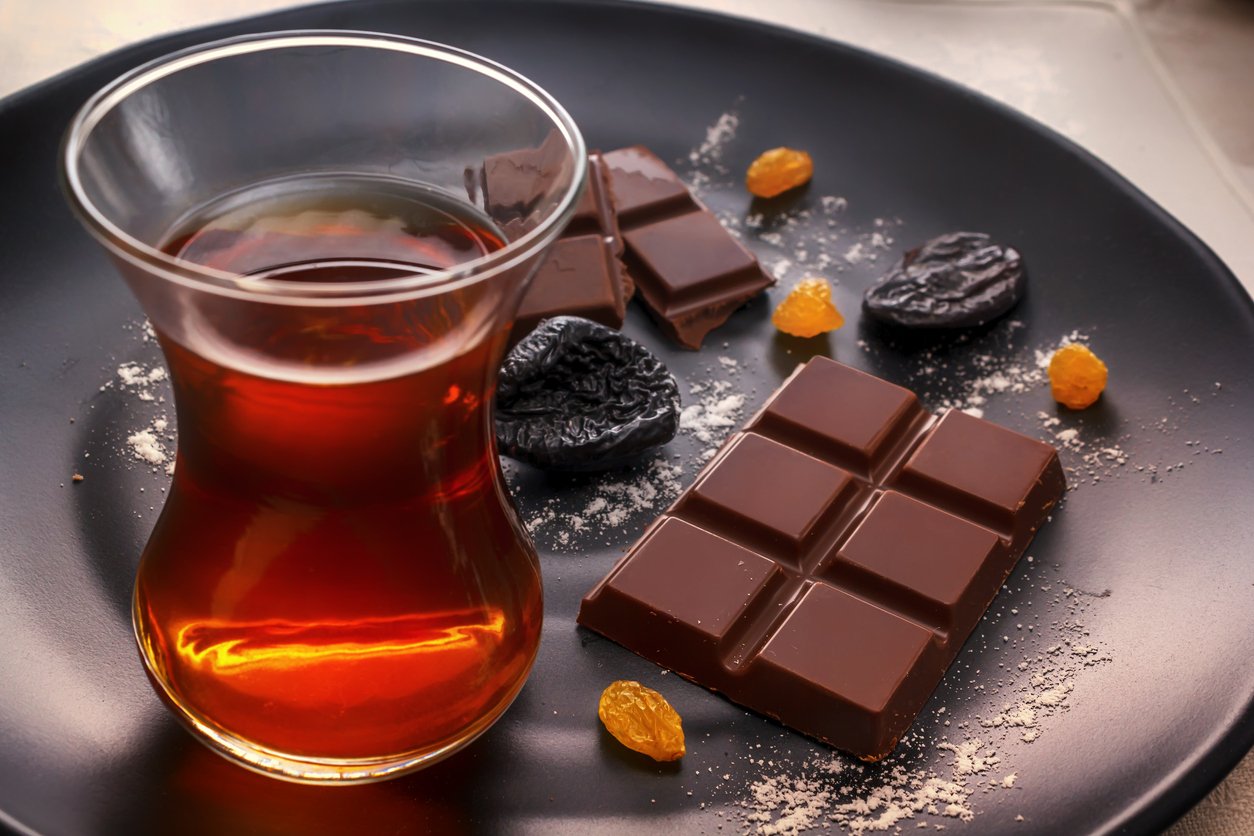
Tannins are multitalented inside our bodies, protecting us from a variety of health threats. Here are a few that have been studied so far.
Tannins and Heart Disease
Test-tube and animal studies have shown that ingesting tannins can slow the hardening of the arteries, keep blood pressure in balance, and lower cholesterol levels. And now studies on human subjects are finding similar results. A 2015 study documented the cholesterol-lowering ability of cookies containing the tannin-rich fiber of young persimmon fruits.
Tannins and Cancer
We know a lot about how tannins can inhibit cancer formation and growth in cell cultures and in rodents. Various tannins can trigger apoptosis (programmed death) in cancer cells, inhibit their proliferation, and make it harder for them to survive. They can repress the expression of certain genes that create new blood vessels to feed cancerous tissue. And they’ve been shown to inhibit carcinogenic processesthroughout the body, including in the lungs, prostate, gums, breast (especially estrogen receptor-positive cancers), liver, colon, rectum, prostate, and ovaries.
Do Tannins Kill Bacteria?
Since the tannin compounds in plants play a role in protecting them from microbes, it stands to reason that they can similarly protect us from teeny tiny pathogens. And scientists have documented such effects against a really broad array of some of the nastiest viruses and bacteria around, including influenza, Papillomaviruses, noroviruses, herpes, HIV, staph, E. coli, strep, and listeria. In-depth analysis suggests that the tannins may destroy the integrity of the pathogens’ cell walls, which gives researchers hope that they may be useful against drug-resistant strains of bacteria.
Are Tannins Antioxidants?
Just like people, plants have to protect themselves from free radical damage. Plants do it by synthesizing antioxidants, and people do it, in part, by eating those plants and thereby “borrowing” their antioxidants. Tannins are among the most prolific free radical scavengers, and as such may be important allies in the prevention of many of the chronic diseases linked to unchecked free radical activity.
One source of free radical damage is solar radiation, which can lead to skin damage. A 2020 study found that tannic acid was able to prevent damage from sunlight, and may even slow down the agingprocess itself, leading to fewer and less noticeable wrinkles.
Tannins for Inflammation
Tannins in topical creams appear to help wounds heal faster, thanks to their anti-inflammatory properties. Knowing this, researchers are now exploring whether tannin-containing foods can help reduce symptoms and progression of ulcerative colitis, a very unpleasant condition characterized by painful lesions in the colon caused by inflammation of the colonic lining. Recent rodent studies have shown that traditional Chinese herbs containing tannins can reduce mucosal inflammation by reducing levels of pro-inflammatory molecules, encouraging healthy gut microbe populations, and strengthening the gut lining to keep irritants out of the colon in the first place.
Beverages and Foods High in Tannins
So now that we’re suitably impressed by tannins, where can you find them? One clue to their presence is that astringent or bitter sensation in the mouth caused by tannins’ ability to bind to proteins in your saliva. Many plants contain tannins, but unless you’re exquisitely sensitive to them, you may not notice their effects in low concentrations. Here are some foods and beverages that are high in tannins.
Tea
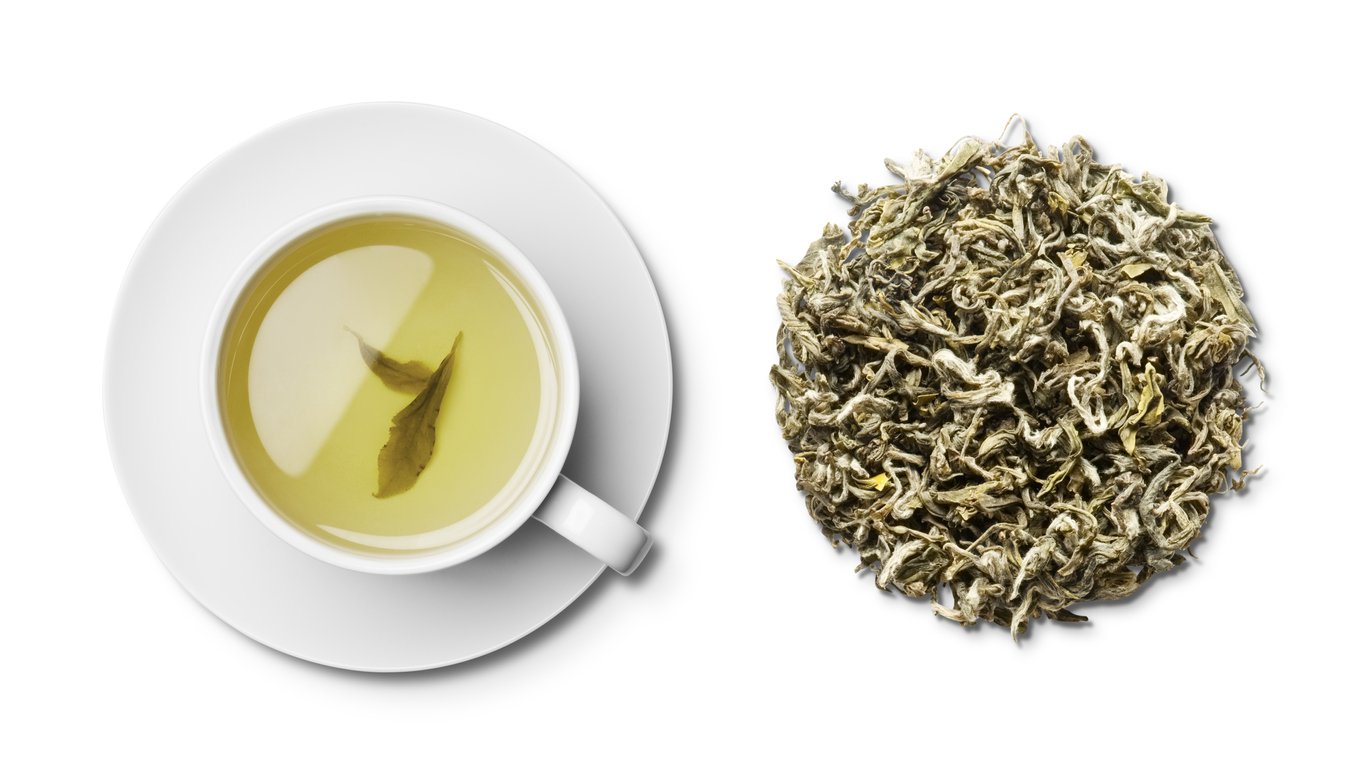
Tea (and by that I mean the leaves of the tea plant, Camellia sinensis, and not herbal tea) is rich in tannins. What are the two main tannins in tea? In case you go on a quest and have to name them to get past the creature guarding the bridge (hey, you never know), they are epigallocatechin gallate (EGCG) and epicatechin gallate (ECG).
The type of tea, when it’s harvested, at what altitude it’s grown, and how it’s processed all influence the tannin content (and taste) of the tea leaves you purchase. You can further modulate the tannin content based on the temperature of the water and how long you let it steep.
In terms of type, green tea has almost twice the total tannin content of black tea and 1.3 times more than white tea. To give you an idea of the wide range of tannin concentrations, a cup of tea may contain between 25 and 80 mg of tannins, depending on the tea and all the factors mentioned above.
Herbs and Spices
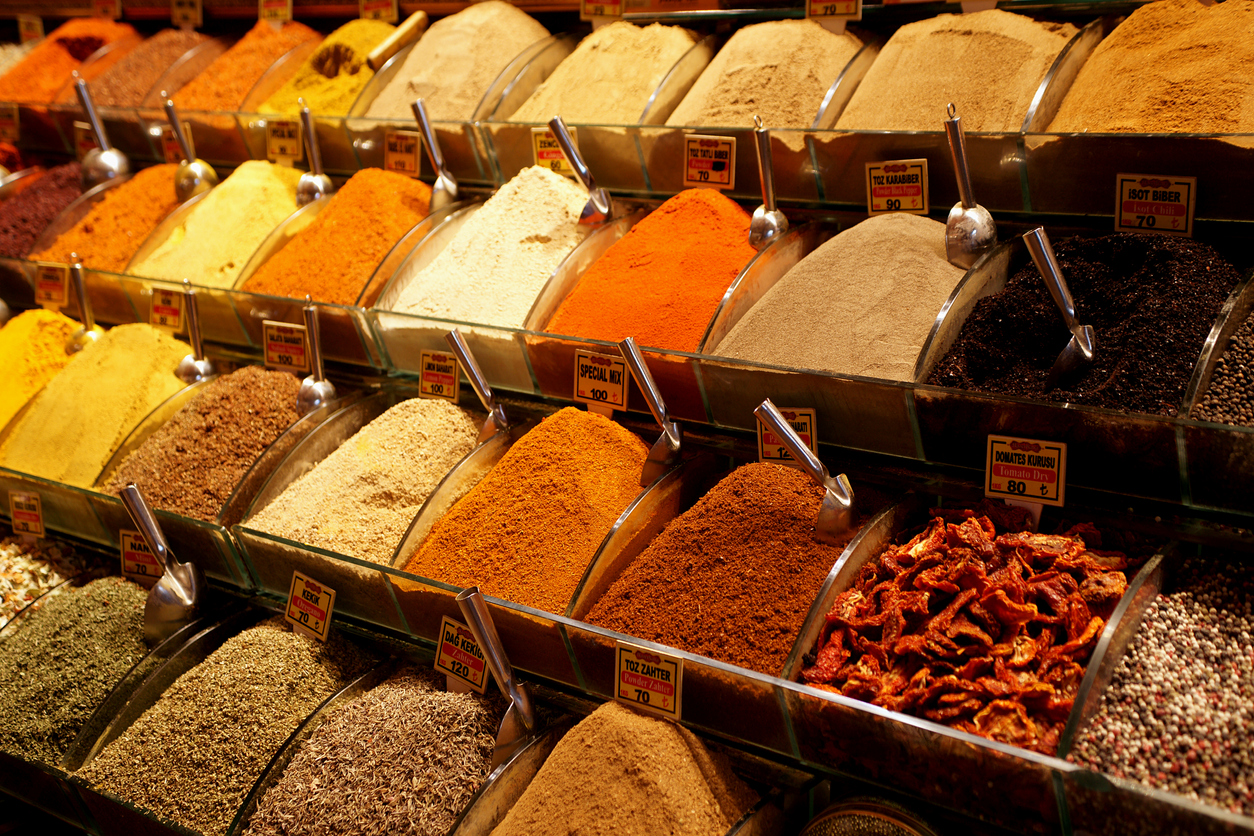
Herbs and herbal teas can also contain tannins. Hibiscus tea is a rich source, according to the scientists who took the measurements using vanillin–HCl and aluminum chloride methods, which presumably means something to the biochemists out there. Rose tea is another rich source; rose essential oil (which is so volatile you’ve almost certainly never encountered it outside of a blended oil or while sniffing an actual rose) contains 15% tannins.
Tannin-touting herbs include licorice, mint, rosemary, coriander, and sage. Many spices also contain tannins and other phenolic compounds; two common ones are cinnamon and cloves. Others include ginger, black cumin seeds, and piripiri. (Also spelled peri-peri, like the sauce, this last can refer to a number of hot chilis found in southern Africa and incorporated into Portuguese cuisine.)
Fruit
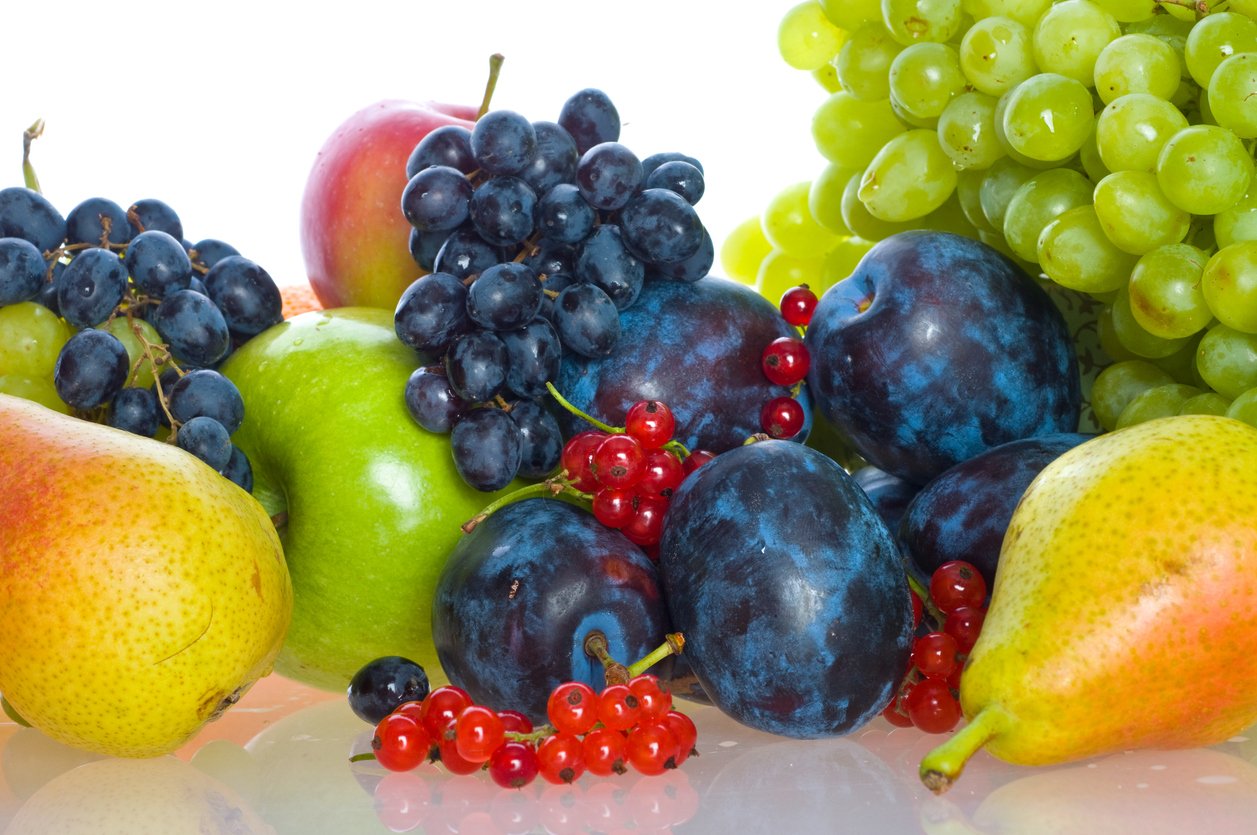
Many of the fruits commonly available in farmers markets and grocery stores are tannin superstars, including grapes, apples, pears, berries, and stone fruit like peaches and plums. Less common fruits also rich in tannins include persimmons (unripe persimmons can deliver unpleasantly high concentrations) and pomegranates. In fruit, tannins exist mostly in proanthocyanidin form.
And wine made from red grapes is also high in tannins — higher, in fact, than the unprocessed grapes, as fermentation can increase the concentration of tannins.
Nuts
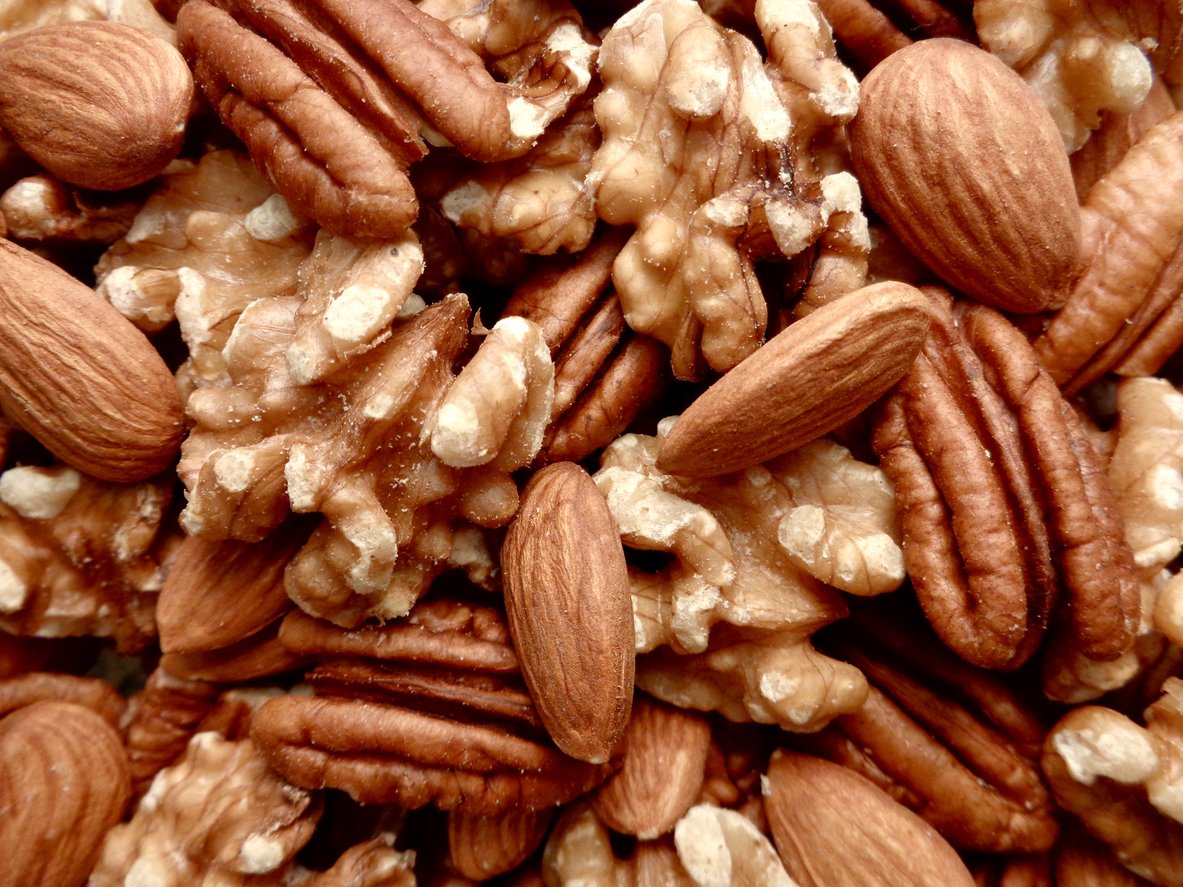
Most nuts contain hydrolyzable tannins, but in smaller amounts than fruit. The nuts highest in tanninsare almonds, pecans, walnuts, hazelnuts, pistachios, and peanuts. (Technically, these last are legumes and not true nuts, but I don’t want to hurt their feelings by not including them here with their friends.)
Beans
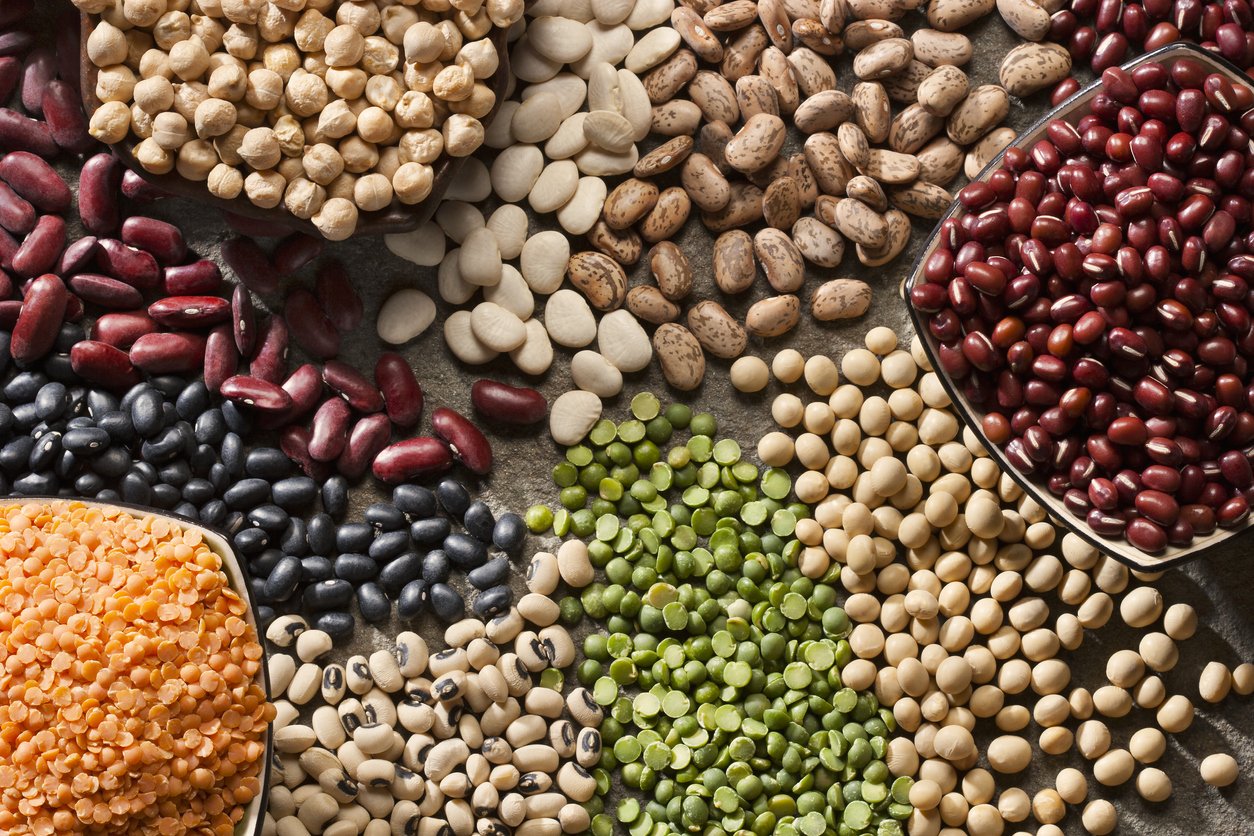
Dried beans have some tannins, mostly located in the seed coat; the amount depends on the species and outside color. Since beans are also a rich source of protein, there’s some concern that the tannins may inhibit protein absorption. (I’m not sure who needs to hear this, but the simplest solution is to cook your dried beans and not eat them raw.)
Chocolate
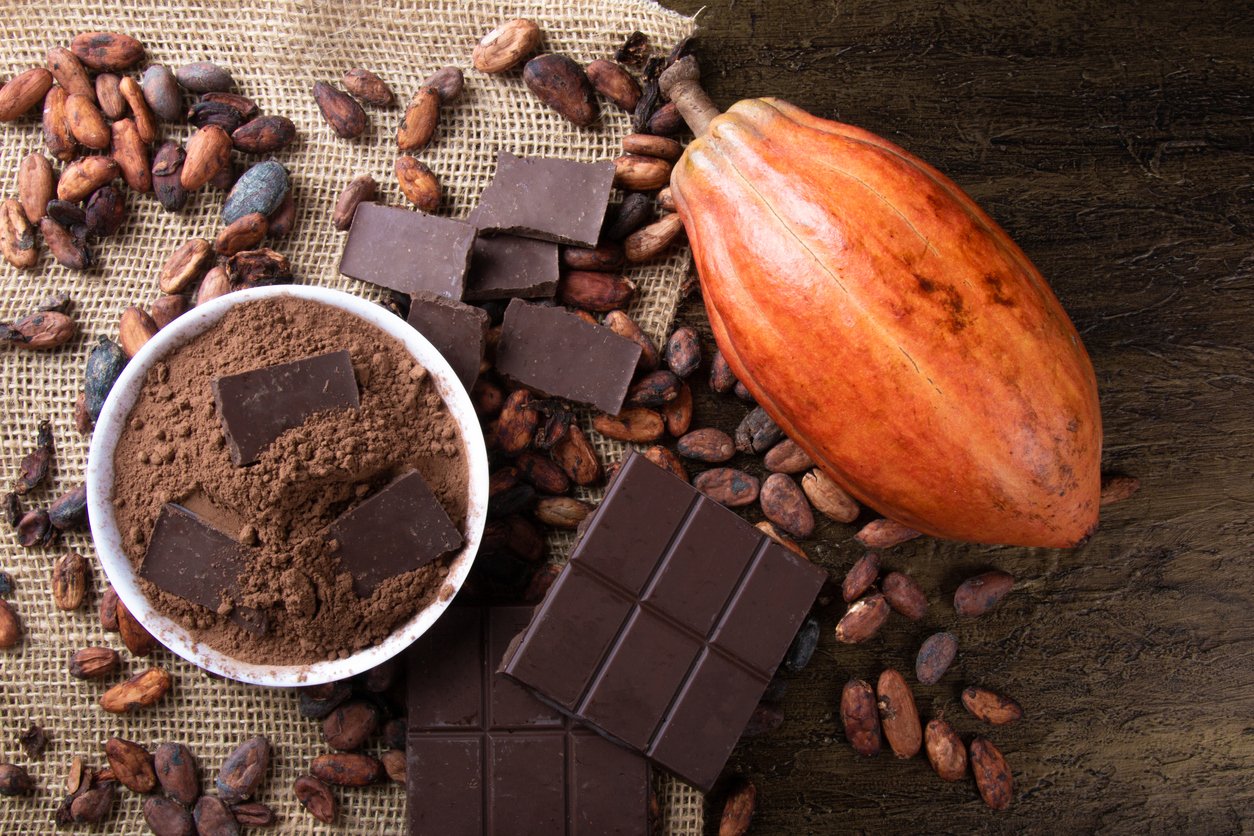
The cacao bean derives much of its bitter taste from tannins, and sweeter forms of cocoa and chocolate still contain these compounds, although to a lesser degree. Compared to the other sources we’ve looked at, in fact, chocolate is off the charts. Wine may have at most 50 mg of tannins per 100 grams, and pecans as many as 700 mg; the bean of the aptly named Theobroma cacao (literally, “Chocolate, Food of the Gods”) delivers a whopping 6,000–8,000 mg of proanthocyanidins in every 100 grams.
Tannin-Containing Recipes
Whether you take your tannins in the form of tea, fruit, nuts, or chocolate, you can embrace their health benefits while enjoying delicious recipes, too. The tasty, plant-powered recipes below will have you seeing (and tasting) tannins in a new light!
1. China Milky Oolong
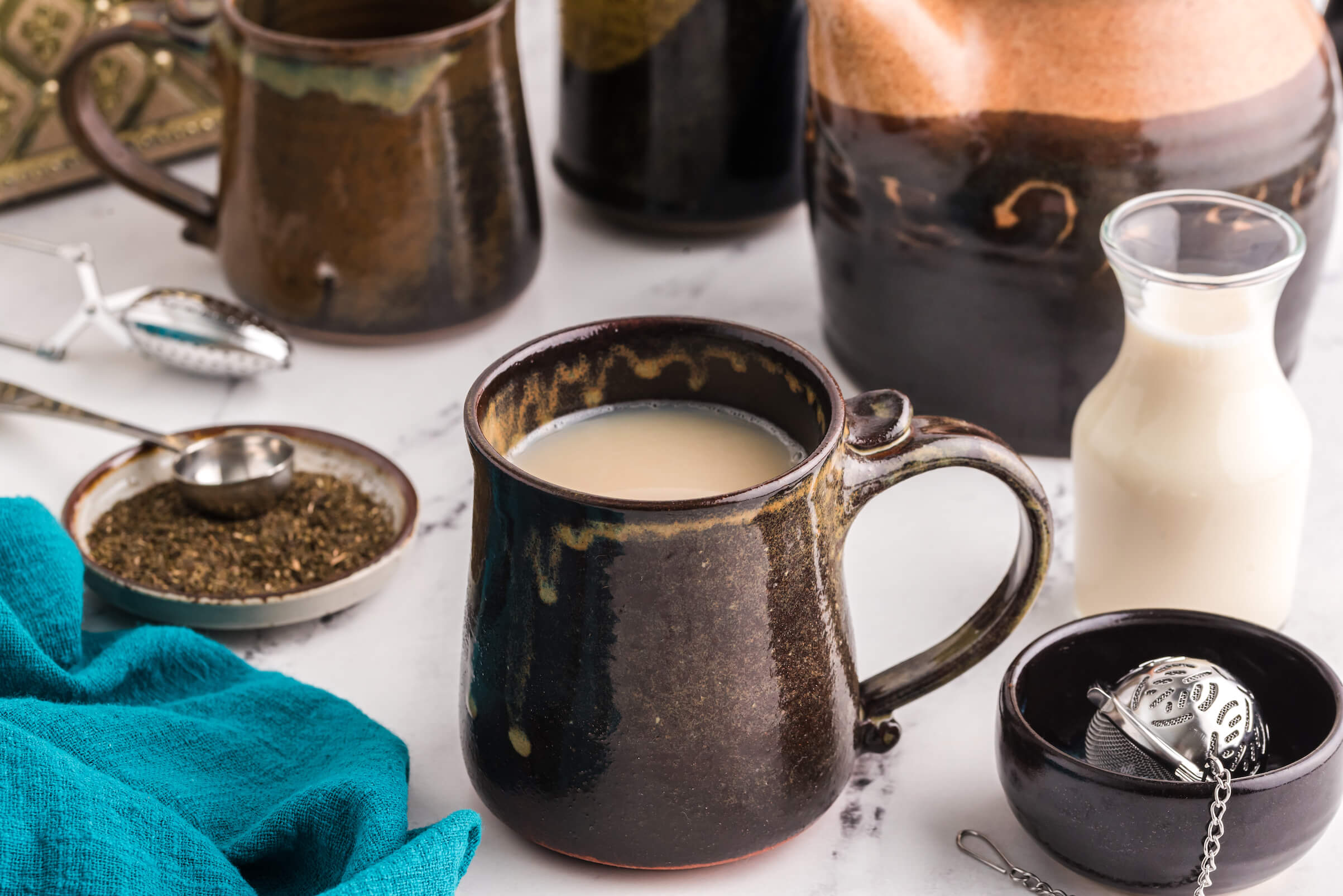
Warm and inviting, China Milky Oolong Tea may help ward off a host of diseases while promoting health and longevity. This tea is at the top of our tannins list thanks to its healthy source of polyphenols (EGCG) that provide exceptional antioxidant capabilities and other nourishing benefits. Cozy up to a mug of it as a gentle way to begin your day or as a refreshing afternoon cup of joy!
2. Three-Grain Peaches and Cream Breakfast Bowl
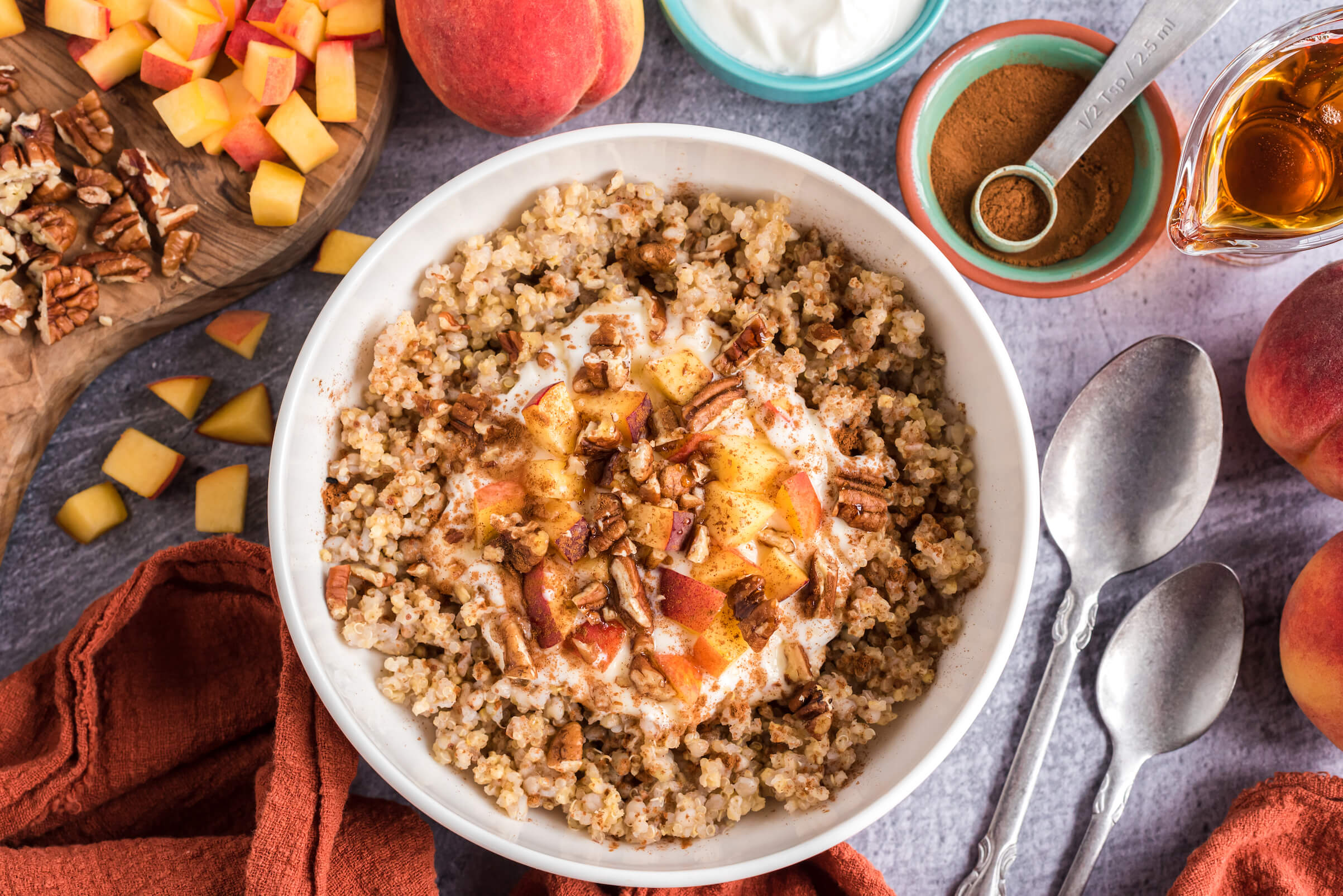
Get ready for a tannins sensation to sweep the nation (or maybe just your kitchen) with this yummy bowl of creamy peaches and grains. Peaches, pecans, and cinnamon all contain tannins and offer powerful plant-powered nutrition and loads of health benefits, too! This heart-healthy Three-Grain Peaches and Cream Breakfast Bowl is the perfect mix of creamy, sweet, and nutty to create a wholesome breakfast delight!
3. Chocolate Rose Pomegranate Bites

Chocolate Rose Pomegranate Bites may be the best guiltless pleasure of all time! The burst of pomegranate arils along with the dark chocolate cultivate a sweet, tart, and delightfully bitter sensation that is serving up some serious nourishment in more ways than one. Bursting with antioxidants and anti-inflammatory-rich tannins, these bites will delight your palate, body, and soul!
Tannins Are Good for Your Health!
Tannins are plant compounds that contribute bitter and astringent qualities to some of our favorite foods (and some that we really don’t like!). While some people focus on their “antinutrient” properties, the bulk of research shows that for most people, tannins offer significant and wide-ranging health benefits that more than offset any potential downsides. Many of the healthiest foods and beverages on the planet contain tannins. And the properties that have made them controversial may actually be the source of some of their health-supporting qualities.












































